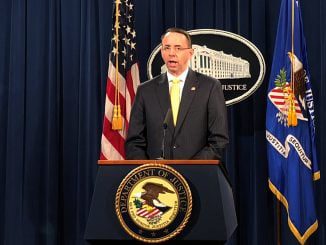FRANKFURT, Germany — Major Western measures to limit Russia’s oil profits over the war in Ukraine took effect Monday, bringing with them uncertainty about how much crude could be lost to the world and whether they will unleash the hoped-for hit to a Russian economy that has held up better than many expected under sanctions.
In the most far-reaching efforts so far to target one of Moscow’s main sources of income, the European Union is banning most Russian oil and the Group of Seven democracies has imposed a price cap of $60 per barrel on Russian exports to other countries.
The impact of both measures, however, may be blunted because the world’s No. 2 oil producer has so far been able reroute much of its European seaborne shipments to China, India and Turkey, although at steep discounts, and the price cap is near what Russian oil already costs.
As it stands, Russia will likely have enough money to not only fund its military but support key industries and social programs, said Chris Weafer, CEO and Russian economy analyst at consulting firm Macro-Advisory.
“At this price level, that outlook really doesn’t change much. But what is key is how much volume Russia would be able to sell,” he said. “And that depends not only on the willingness of Asian buyers to continue buying Russian oil, but also what is the physical ability of Russia to shift that oil.”
Western leaders are walking a fine line between trying to cut Russia’s oil income and preventing an oil shortage that would cause a price spike and worsen the inflation plaguing economies and hurting consumers worldwide. They could later agree to lower the price cap to increase pressure on Russia, which says it will not sell to countries that observe the limit.
To seriously cut Russian revenue, the cap must be lowered “quickly and progressively,” said Lauri Myllyvirta, lead analyst at the Finland-based Centre for Research on Energy and Clean Air.
Even the $60 cap, if enforced, would already push Russia to lower per-barrel tax, he said, calling it “by far the biggest step to date to cut off the fossil fuel export revenue that is funding and enabling Russia’s barbaric invasion of Ukraine.”
Russia has been living off the huge windfall from higher oil prices earlier this year and will be more vulnerable in the next several months when that money is spent, Myllyvirta said.
Europe was heavily dependent on Russian oil and natural gas before the war and has had to scramble to find new supplies. Previously, the EU banned imports of Russian coal, and the U.S. and the U.K. halted their limited imports of Russian oil, but those steps had a much smaller economic impact.
Even as Western customers shunned Russian oil, the higher prices driven by fears of energy shortages helped offset lost oil sales, and Russian exporters have shipped more oil to Asian countries and Turkey in a major reshuffling of global oil flows. Russia’s economy has shrunk — but not by as much as many expected at the start of the war almost 10 months ago.
The Biden administration doesn’t expect that Russia’s threats to cut off countries observing the cap and slow production would “have any impact long term on global oil prices,” National Security Council spokesman John Kirby said.
He said “this cap will lock in the discount on Russian oil” and countries like China and India would be able to bargain for steep price reductions.
The cap has a grace period for oil that was loaded before Monday and arrives at its destination before Jan. 19 to minimize disruption on oil markets.
The measure bars insurers or ship owners — most of them located in the EU or U.K. — from helping move Russian oil to non-Western countries unless that oil was priced at or below the cap.
The idea is to keep Russian oil flowing while reducing the Kremlin’s income. The U.S. and Europe leaned more toward preventing a price spike than provoking financial distress in Russia.
Ukraine’s President Volodymyr Zelenskyy had called for a price ceiling of around $30 per barrel. That would be near Russia’s cost of production, letting Russian oil companies earn enough only to avoid capping wells that can be hard to restart. Russia needs some $60 to $70 per barrel to balance its budget.
Russia could use methods to evade the sanctions such as those employed by Iran and Venezuela, including using “dark fleet” tankers with obscure ownership and ship-to-ship transfers of oil to tankers with oil of similar quality to hide its origin. Russia or China could also organize their own insurance. Sanctions experts say that those steps will impose higher costs on Russia.
The new EU sanctions led the Italian government to take temporary control of the Russian-owned ISAB refinery in Sicily last week. The government stopped short of nationalization but put the facility, where about 20% of Italy’s oil is refined, under receivership to protect 10,000 jobs linked to the refinery and its suppliers.



